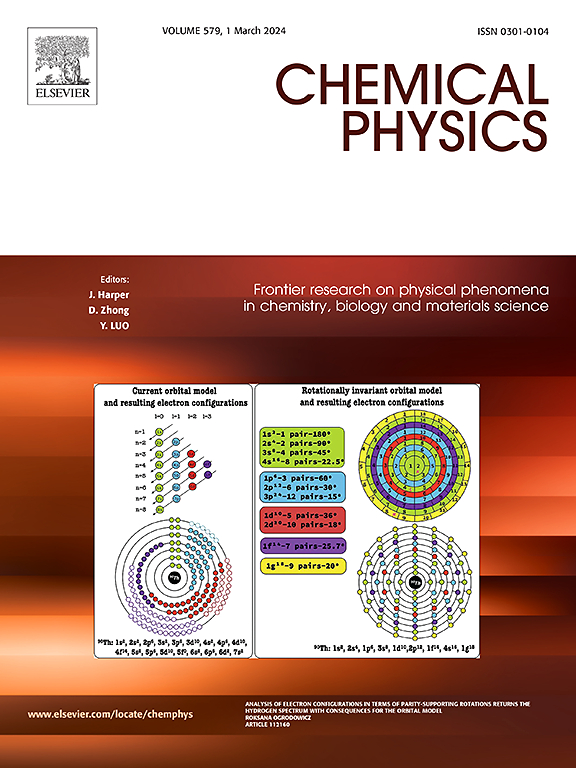Investigating nitrogen molecule adsorption on borophene surface using reactive molecular dynamics simulation
IF 2.4
3区 化学
Q4 CHEMISTRY, PHYSICAL
引用次数: 0
Abstract
This study explores the chemical adsorption mechanism of nitrogen molecules on the borophene surface at temperatures of 300 K, 500 K, 700 K, and 900 K. The adsorption process consists of three steps. Initially, a bond forms between a nitrogen atom and a boron atom. Subsequently, the angle between the nitrogen molecule and the boron atom changes, leading to various potential energy states and transition states. Finally, a second bond forms with another nitrogen atom, occurring after a key transition state where multiple bonds exist. By analyzing potential energy changes, and atomic distances, we elucidate the adsorption mechanism and atomic placements during transition states. To the best of our knowledge, this is the first theoretical investigation of N₂ adsorption on a borophene surface. Moreover, our findings reveal a temperature-dependent reaction pathway, with distinct adsorption mechanisms observed at higher temperatures. Notably, the mechanism evolves with temperature, revealing that products formed at 900 K are more stable.
反应分子动力学模拟研究氮分子在硼罗芬表面的吸附
本研究探讨了氮分子在300 K、500 K、700 K和900 K温度下在硼罗芬表面的化学吸附机理。吸附过程包括三个步骤。最初,氮原子和硼原子之间形成一个键。随后,氮分子与硼原子之间的夹角发生变化,导致各种势能态和过渡态。最后,在多个键存在的关键过渡态之后,与另一个氮原子形成第二个键。通过分析势能变化和原子距离,我们阐明了过渡态的吸附机理和原子位置。据我们所知,这是第一次对硼罗芬表面的N₂吸附进行理论研究。此外,我们的发现揭示了温度依赖的反应途径,在较高温度下观察到不同的吸附机制。值得注意的是,该机制随着温度的变化而变化,表明在900k时形成的产物更稳定。
本文章由计算机程序翻译,如有差异,请以英文原文为准。
求助全文
约1分钟内获得全文
求助全文
来源期刊

Chemical Physics
化学-物理:原子、分子和化学物理
CiteScore
4.60
自引率
4.30%
发文量
278
审稿时长
39 days
期刊介绍:
Chemical Physics publishes experimental and theoretical papers on all aspects of chemical physics. In this journal, experiments are related to theory, and in turn theoretical papers are related to present or future experiments. Subjects covered include: spectroscopy and molecular structure, interacting systems, relaxation phenomena, biological systems, materials, fundamental problems in molecular reactivity, molecular quantum theory and statistical mechanics. Computational chemistry studies of routine character are not appropriate for this journal.
 求助内容:
求助内容: 应助结果提醒方式:
应助结果提醒方式:


